Space-heating accounts for 35% of total energy-related emissions in Ireland today. As one key component of its response to the National Climate Action Plan, South Dublin County Council (SDCC) committed to the decarbonisation of its county-town, Tallaght. Nationally, decarbonisation will rely on increasing renewable generation assets – wind and solar – on the grid to a target of 85% by 2030. This will enable significant carbon-savings through the widespread electrification of the heat and transport sectors.
The Tallaght District-Heating (DH) Scheme was identified as a pilot project to promote this switch to low-carbon, renewable heating. 70% of the Dublin region is suitable for adaptation to DH (increasing to 86% in the city centre). There are sufficient waste heat sources in Dublin to service the equivalent of 1.6 million homes; DH can recycle and harness this waste heat as a low-carbon resource for space-heating.
In 2016, as part of a five-city EU Inter-Reg programme to foster DH technology in northern Europe, €950,000 was made available (including €347,000 from SDCC resources) to underwrite initial work on the Tallaght DH network. This seed-funding allowed the formation of South Dublin District-Heating Company – Ireland’s first not-for-profit, publicly-owned heat utility, now trading as ‘Heat Works’.
The DH network was envisioned, championed, and project managed by the SDCC Architects Department, building on experience installing CHP, solar arrays, heat pumps, and bio-mass boilers in public buildings over a twenty-year period. The DH scheme was a collaboration between SDCC, Amazon, Fortum (the contractor), and the Dublin energy agency Codema, which has provided a low-carbon solution, optimising the potential of recyclable heat combined with innovative heat-pump technology. Heat Works is set up to act as an exemplar heat-network business in Ireland, delivering economic, environmental, and social benefits for residents and businesses while supporting the local and national climate action plans by reducing our carbon footprint.
Heat Source
At this time, Amazon Web Services (AWS) were planning a large data centre in Tallaght. As part of pre-planning discussions with SDCC, AWS agreed to collect and make available waste-heat from the data-centre’s cooling-system to the DH network. As part of this agreement, waste-heat collection equipment and ongoing heat delivery to Heat Works will be at the expense of AWS in line with their company commitment to global carbon-reduction. The Tallaght DH network is the first scheme in Ireland to capture and efficiently re-use waste heat from a large-scale data centre using bespoke 4G district-heating technology. 10MW of waste-heat is available for use in the Tallaght network on this basis.

It is currently estimated that by 2028 data centres may be using up to 29% of the national grid, and by 2030 will have added 13% to carbon-emissions on the grid. While not eliminating all primary energy use, DH can seriously offset the generation of both heat and carbon for space-heating required by DH customers and greatly reduce carbon emissions discharging energy-intensive waste-heat from cooling systems in data centres.
The Energy Centre and Pipe-Network
To utilise the waste-heat generated by AWS, a distinctive zinc-clad Energy Centre was constructed adjoining the data centre to collect, consolidate, and distribute hot-water to the DH network. The hot air from AWS is collected and run through a heat-pump to raise the temperature of water to 25-27°C. This water is then transferred to the Heat Works Energy Centre building where the temperature is raised again through bespoke centralised large-scale heat pumps to 85°C and sent through the pipe network. In turn, the servers in the data centre are provided with cool air as a by-product from the Energy Centre. The Energy Centre also includes full peak load back-up via a 3MW electric boiler to ensure heat supply to the network can be met at all times. The scheme is fully electric with no on-site combustion resulting in the elimination of particle emissions. In addition, the carbon content of the heat will continue to reduce over time in line with the decarbonisation of the national grid through increased deployment of renewable sources, e.g. onshore / offshore windfarms, solar power, etc [1].
This Tallaght DH scheme is currently providing both space-heating to buildings on the DH network and cooling to the data centre [2]. The scheme currently has planning permission for 400m³ of thermal water-storage. In time, this will enable greater flexibility and utilisation of off-peak electricity, which will increasingly enable the DH network to support the grid by providing greater demand-side response services to regulate large fluctuations associated with wind-power generation. The initial pipe network measures 1.6km in length, utilising different sizes of pre-insulated pipes to ensure minimal thermal losses. Hot water is distributed to customer buildings through the pipe network from the Energy Centre. Heat exchanger substations are located within the customer buildings with an indirect system (the network water crosses and heats the customers’ water, but they do not mix). Energy meters measure the amount of thermal energy used by the customer for heating spaces, HVAC systems, and sanitary hot water.

Overall, the Tallaght DH Scheme produces CO₂ savings of 1500 tonnes per annum in the first phase of the scheme along with a reduction of 528kg in nitrogen oxide emissions. This will increase as the scheme expands and the input of renewably-generated electricity increases. In effect, fossil-fuel usage will be reduced by 100% as the grid is made fully renewable. The lack of combustion onsite eliminates particulates and provides cleaner air for Tallaght town centre.
In addition to road testing DH generation and control technologies in Ireland, the Tallaght scheme was set up to trial the legal, financial, procurement, and governance structures required for a heating network in Ireland. A series of innovative contract types had to be developed for the project carried out under the skilful direction and experience of Philip Lee and Associates Solicitors. The fledgling company required an experienced energy-supply company (ESCO) to design, construct, and operate the DH network. This role was tendered across the whole of the EU using the OJEU process. The tender was arranged as a ‘Competitive Dialogue’ in three stages culminating in the submission of a final design and financial bid. This included the design of the Energy Centre and the distribution pipe network. The preferred bidder was Fortum, a multi-national ESCO based in Finland with extensive experience in DH across the Nordic countries and Eastern Europe.
Procurement Models
A Local Energy-Supply Contract (Design, Build, Operate, & Maintain – DBOM) between the ESCO and Heat Works was agreed. This contract is divided in two phases – Construction Phase (Design & Build), and Operation Phase (Operate & Maintain). Heat Works buys the heat produced from the ESCO based on a fixed operational carbon-efficiency figure. The manner in which this heat is produced, and the risks associated with its production is the responsibility and risk of the ESCO, and the cost of electrical supply is at the risk of Heat Works. A separate new contract had to be developed and agreed to address the transfer of waste heat from AWS to Heat Works, and the return of lower-temperature water from the DH network to AWS to assist in cooling within the data centre.

A customer-contract was also required addressing the sale of heat from Heat Works to each customer. Heat Works are responsible for customer relations and calculation of customer bills. Monthly customer bills include fixed components (two standing charges for administration and network maintenance), and a variable charge for quantity of heat supplied. The initial customers are SDCC (County Hall and Library, the Innovation Centre, and two-hundred affordable apartments) and TUD Tallaght (main campus building, SSRH sports building, and the North Block Catering College). To date, 70,000m² of space are connected to the Tallaght network, and total investment stands at €8 million [3].
The contract for Design, Build, Operate, and Maintenance was signed in October 2020 and works commenced in 2021. Works were directly affected by COVID-19 government-imposed site closures. Testing began on the plant and network during October, November, and December 2022. Heat was delivered to first customers from 19 January 2023 with Substantial Completion achieved in July 2023. Since then, the district-heating scheme has been in its Operation and Maintenance phase.

Present Tense is supported by the Arts Council through the Arts Grant Funding Award 2024.
1. In March 2024 for instance, 43% of electricity from the grid was generated from fully renewable resources, with a target of 70% set for 2030.
2. The energy production system consists of primary production units, secondary auxiliary systems, automation and control systems, and electrical power systems based on 3MW of waste heat capacity and 5MW of district heat capacity. The system operates at 320% efficiency, i.e. every kW of electrical supply generates 3.20kW of heat to the network. The Energy Centre and network is controlled remotely from Finland via the SCADA system for optimal efficiency.
3. The project was funded through a blend of EU grant, Irish government grant, SDCC finance, and initial investment by Fortum, including:
• €4.9 million grant funding through the Irish Government’s Climate Action Fund (Dept. of the Environment, Climate and Communications).
• €670,000 via EU Inter-Reg project.
• €770,000 through SDCC as matching funding to Inter-Reg grant and seed funding.
• The remaining project upfront capital was provided by Fortum, to be repaid to them in monthly instalments over the ten-year duration of the DBOM Contract.
• Capital funding for the Energy Centre equipment and network pipework was linked to connection charges payable by heat customers.
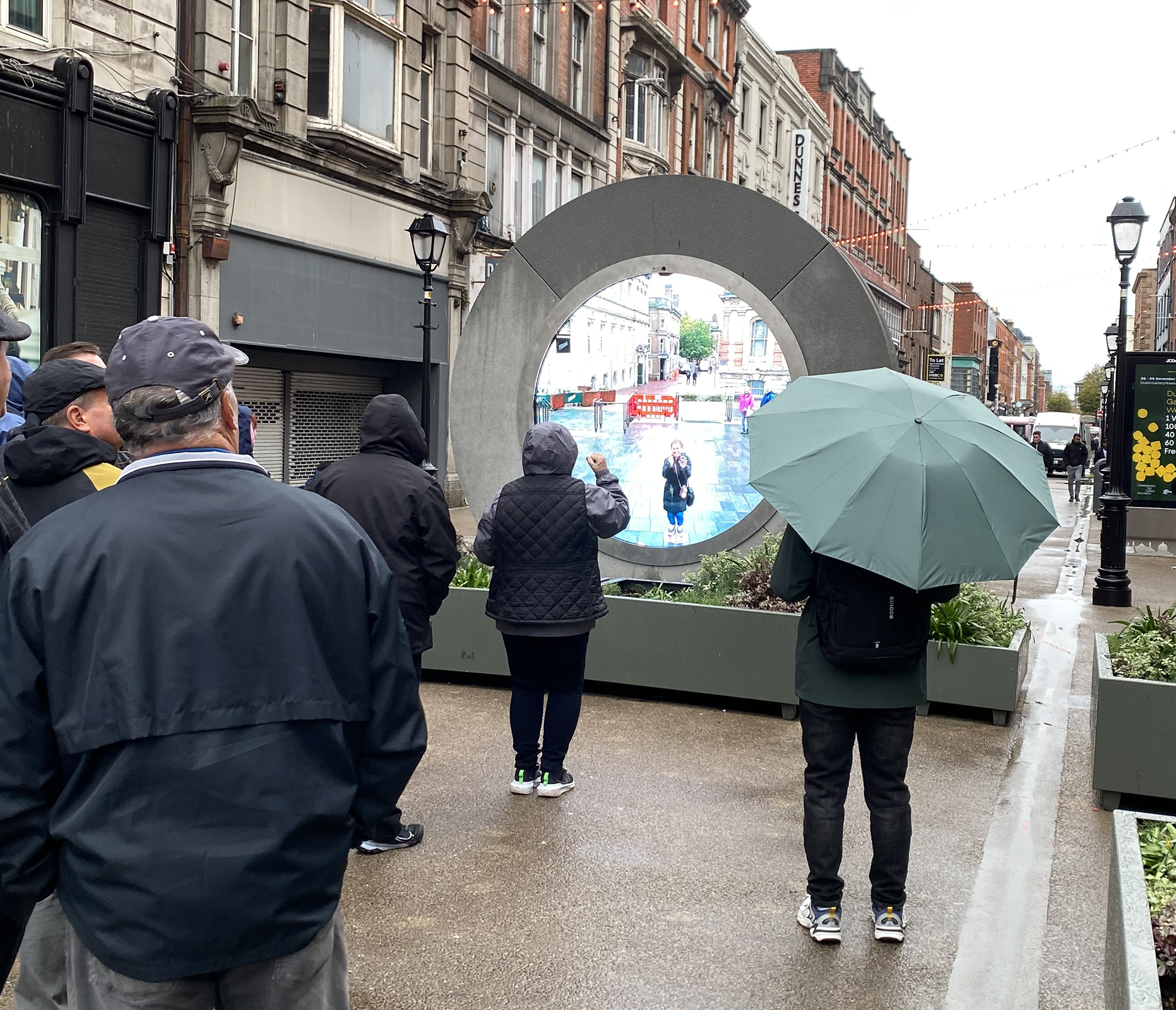
Effectively a continuous zoom call encased in a three-metre tall stone frame, the portal arrived with a promise of diasporic fraternity and a message of shared humanity borne out of access to the same ‘liveness’. The project is regularly described by Gylys in profoundly optimistic, even techno-utopian terms: ‘I felt a deep need to counter polarising ideas and to communicate that the only way for us to continue our journey on this beautiful spaceship called Earth is together’, and later as ‘The addition of the Portal in Philadelphia is an exciting step forward in our mission to build a bridge to a united planet’. [1] This sci-fi language of ‘spaceships’ and ‘missions’ – that suffuses all publicity released by Portals Organization – seems to reveal that for Gylys, the specific urban contexts in which the portals are located are secondary in importance to the fact that cities have dense populations, and can therefore bring a maximum number of ‘fellow humans’ into remote contact.
There is generosity in this goal. While Gylys may be operating from an idealised stratospheric viewpoint, the installations themselves are nevertheless embroiled in the fabric of urban life – in the politics of real estate, and bear witness to the endlessly contingent cityscapes they exist within. [2] Insofar as they present an image that is truly ‘live’, they live among us.
In fact, their circular viewport, coupled with their stationary nature, means that the portals share something of a cultural lineage with a much older technology of civic novelty: the camera obscura. Particularly the popular Nineteenth-Century camera obscurae that were built to be public attractions on high vantage points in cities like Bristol or Edinburgh. When spending time with the images cast by both, the presence of a hypnotic and uncanny liveness – an endless, voyeuristic potentiality – can make it difficult to look away for fear of missing something.
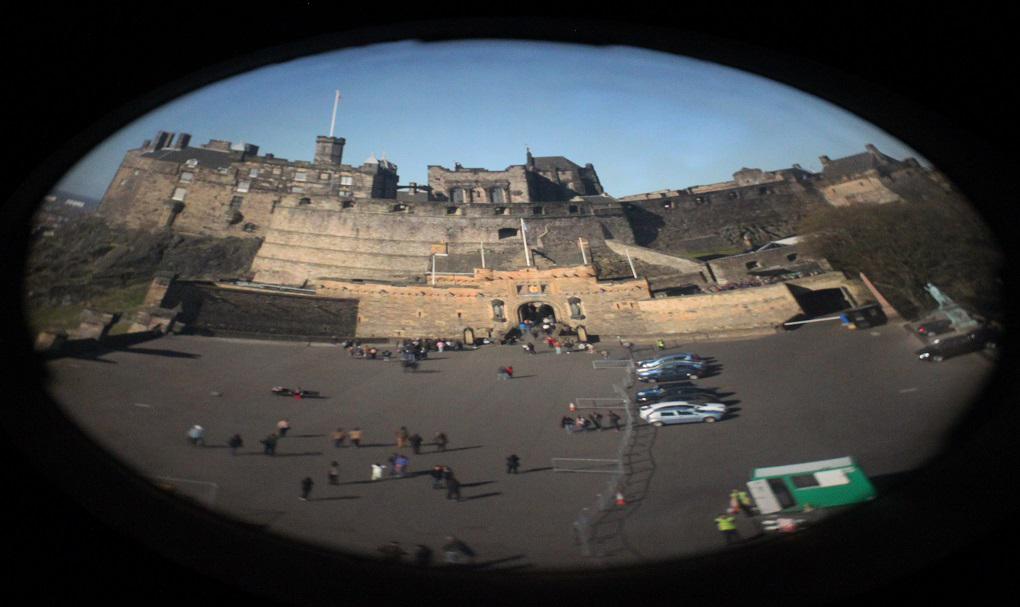
The portals differ from these darkened rooms however, because unlike the rarefied, sanitised views offered by these constructions they address the street at just above eye-level. In Skyline: The Narcissistic City, cultural historian Hubert Damisch outlines a divergence in the historical representation of urban space between ‘birds-eye-view’ depictions and maps that abstract and seek to rationalise cities – ‘Does the city remain “real” when considered from such distances [...]’ – and street-level depictions that present urban space as lived, contingent, and personal. [3] Damisch argues that the perspective techniques used by the painters Canaletto and Brunelleschi to produce realistic veduta paintings imply and demand a subject. [4] Veduta means ‘view’ in Italian, and there is no view without a viewer.
Camera obscurae are distinctive today for their relative stability. Unlike ubiquitous jittery smartphone video feeds, a camera obscura will generally remain still, allowing the world outside to move silently past within its static frame. A decision therefore needs to be made about what its aperture should be trained on. Will there be enough movement and visual interest from this or that vantage point? There is a politics of performative urban representation implied in this decision. What kind of scene, what view of ourselves and of our space justifies the building of a camera obscura? A similar value judgement applies to each portal.
Many Dubliners were initially bemused and apprehensive at the choice of location on North Earl Street. Sitting in the afternoon shadow of The Spire, and across the road from the GPO, it is placed in a historically significant part of the city, but also an area – ‘D1’ – that is notorious among locals for its high concentration of social issues. There was much talk at the time of; ‘why we can’t have nice things’, and the early weeks of the portal saw enough of what was deemed inappropriate behaviour from both cities to generate a viral international interest in the portal, and a temporary suspension of its video feed.
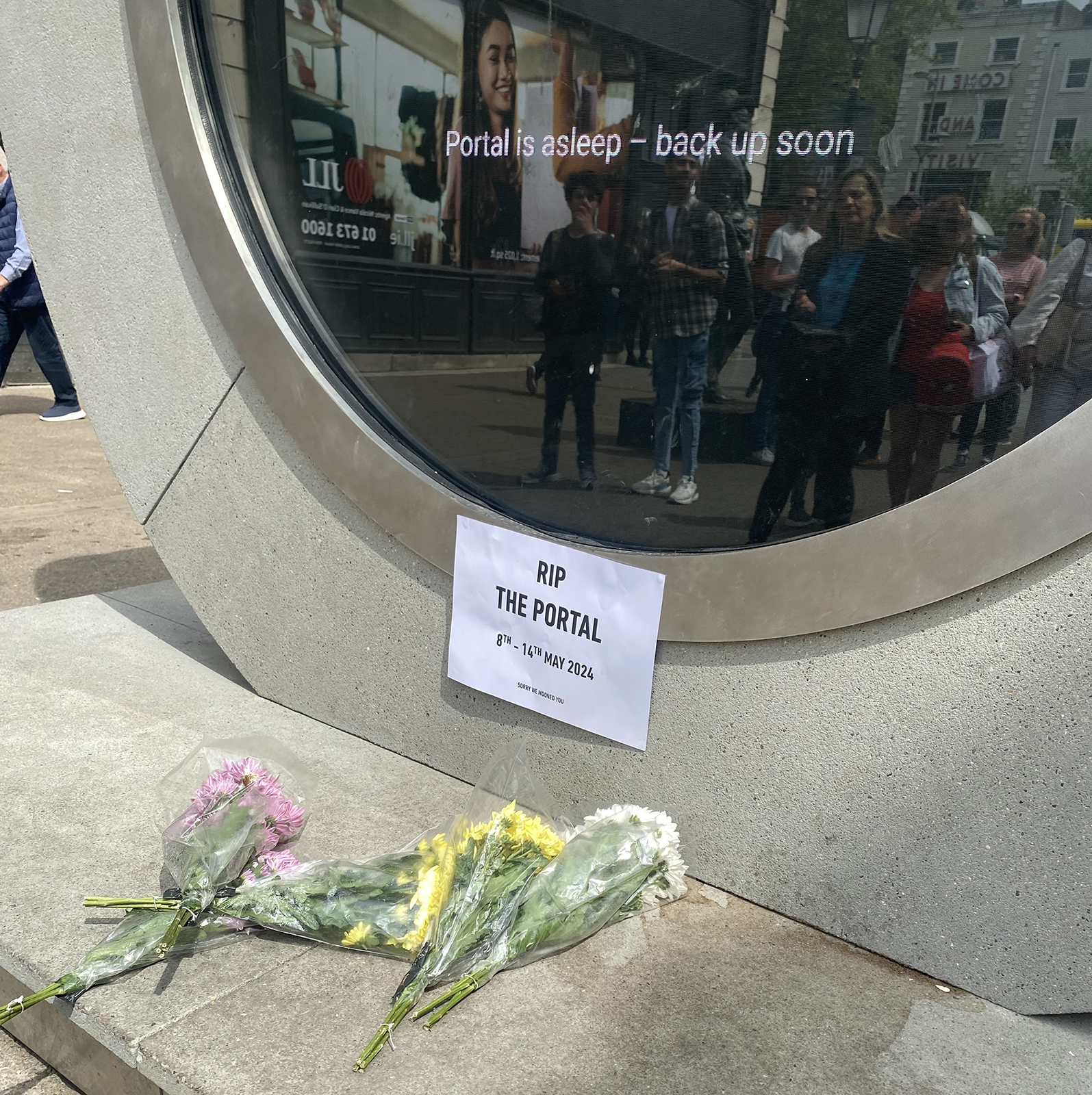
It is significant that it was placed in the heart of D1, rather than an alternative, more predictable cultural hotspot. Since its installation planters have been placed immediately in front of the screen, to create distance between the portal and the crowd, and the steady stream of visitors to the portal appears to be bringing a form of passive communal surveillance to the street, along with bringing custom to the area. Regardless of the location choice however, the important thing is that the portal greets us where life happens, at street level, rather than from on high. For this reason, and despite its sci-fi billing, it enacts a useful resistance to a pervasive trend in tech ideology to operate inter-planetarily, agelessly, and it ends up doing something simple – it enables eye-contact.

We’re looking at a street-level view of somewhere in the UK.
A woman in a black knee-length jacket does a shimmy dance in the centre of the circular frame while a group of tourists film her from our side.
Someone is on their phone waving into the screen, someone on screen – also on a phone – waves back.
We’re in Poland. But this camera angle seems to be more buildings than pavement and there’s no one in view.
Then, suddenly, we’re in Lithuania. An empty square, wet cobblestones and white street lines stretch off towards a grand seeming civic building.
There must be more than twenty people gathered here in the rain at this point, James Joyce’s hat and glasses standing only just taller than the cluster of black umbrellas.
The square is still empty, a man with a dog on a lead walks through the centre of the frame from left to right.
A young woman and man emerge from the bottom of the frame and turn to us while on the go, waving their bound umbrellas at us as if afraid of appearing rude.
It feels like we should see ourselves on the screen, as if we were taking a group selfie. We sense that we are performing, but we disappear at this end.
Lithuania is busy now. It is wet there too.
Three people here have not moved from their position at the front since I've been here. It feels like they are waiting for someone.
On our side a woman in a red velvet dress with a black umbrella pirouettes and curtseys while on her way into North Earl Street.
A seagull sits atop the portal.
In May 2024, the Lithuanian artist Benediktas Gylys installed a portal between Dublin and New York. In this article, Felix Hunter Green explores how the portal (the third of its kind at the time) introduced a new form of present tense, a remote urbanism, to the fabric of North Earl Street.
Read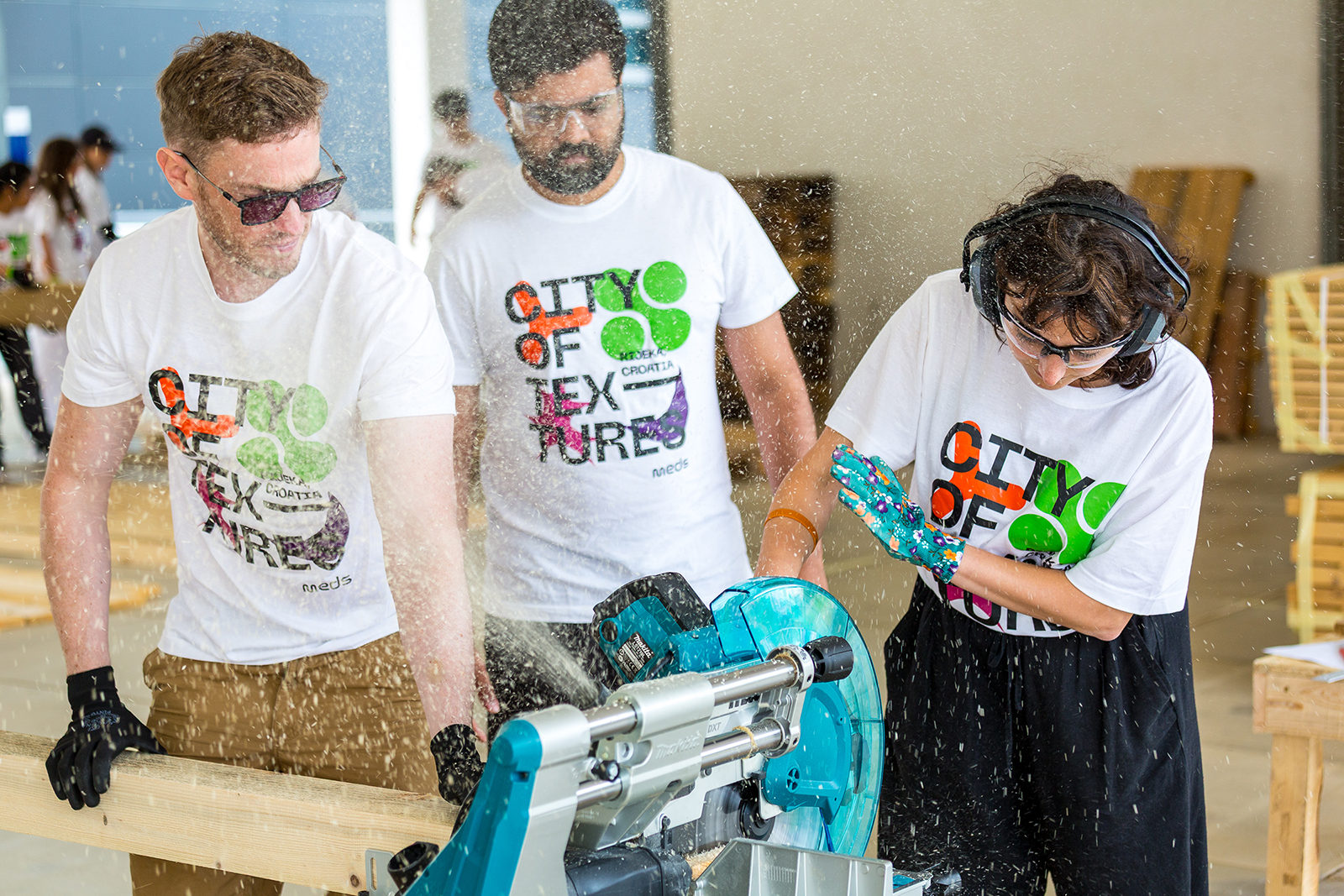
Interdisciplinary gatherings are rare, yet extremely useful because they allow people from various fields to meet, exchange information, influence each other's point of view, and to learn from one another in a way which is unique, unpredictable, and dependent upon the nature of participants field of discipline.
For various reasons, art and design-specific interdisciplinary gatherings seldom occur. Firstly, artistic occupations are generally quite competitive, so may prove reticent to share their processes. It is unfortunate as I firmly believe the more artists that one surrounds oneself with, the more one can explore their own process, even more so when it comes to an international gathering of artists and designers who would not otherwise meet.
Secondly, artistic communities are usually formed by a group of people interested in the same form of art, which is certainly beneficial when it comes to improving one’s technique. Nonetheless, learning from someone who is focused on a different discipline, thus confronting an unexpected perspective, is extremely useful. For instance, a painter and a fashion designer are both interested in colours: comparing their approaches can be eye-opening and thought-provoking for both. Being so rare, when people from various countries, disciplines, and professions do meet it is unforgettable and extremely enriching.
One such opportunity is MEDS, ‘‘Meeting of Design Students’, an annual international event that unites creative students from different fields together with practising professionals to share knowledge and skills and form meaningful connections through collaboration the medium of hands-on innovative projects.
A platform for creative and cultural exchange
MEDS is an international, non-profit, two-week event. Although adored by many international students, it is usually only through word of mouth that one gets to hear about it. This article is intended to raise awareness of this event, as it is a unique opportunity providing a wonderful and enriching experience both for students and young professionals alike to learn new skills and meet like-minded people. MEDS brings together students from various creative fields as well as professional practitioners to share knowledge and skills – “It promotes design’s positive societal impact, fosters interdisciplinary collaboration, and offers designers a platform to build connections, unlock potential and apply their talents outside the faculty” [1].
MEDS began in 2010 and has been held almost every year since. It has been hosted in a different country every year: Ljubljana, Slovenia in 2012, Dublin two years after, and Zaragoza, Spain in 2022. The event usually spans two weeks in August and gathers around 150 participants from all over the world.
To attend, one has to fill out an application form and complete a creative task. If selected, you become a member of a ‘national team’ including about 10 people from each particular country. Every participant chooses one of the proposed projects and spends two weeks working on it. The philosophy of MEDS rejects any hierarchy and so the tutors, who are open-minded professionals volunteering their time, and the participants develop and shape the project outcome together.
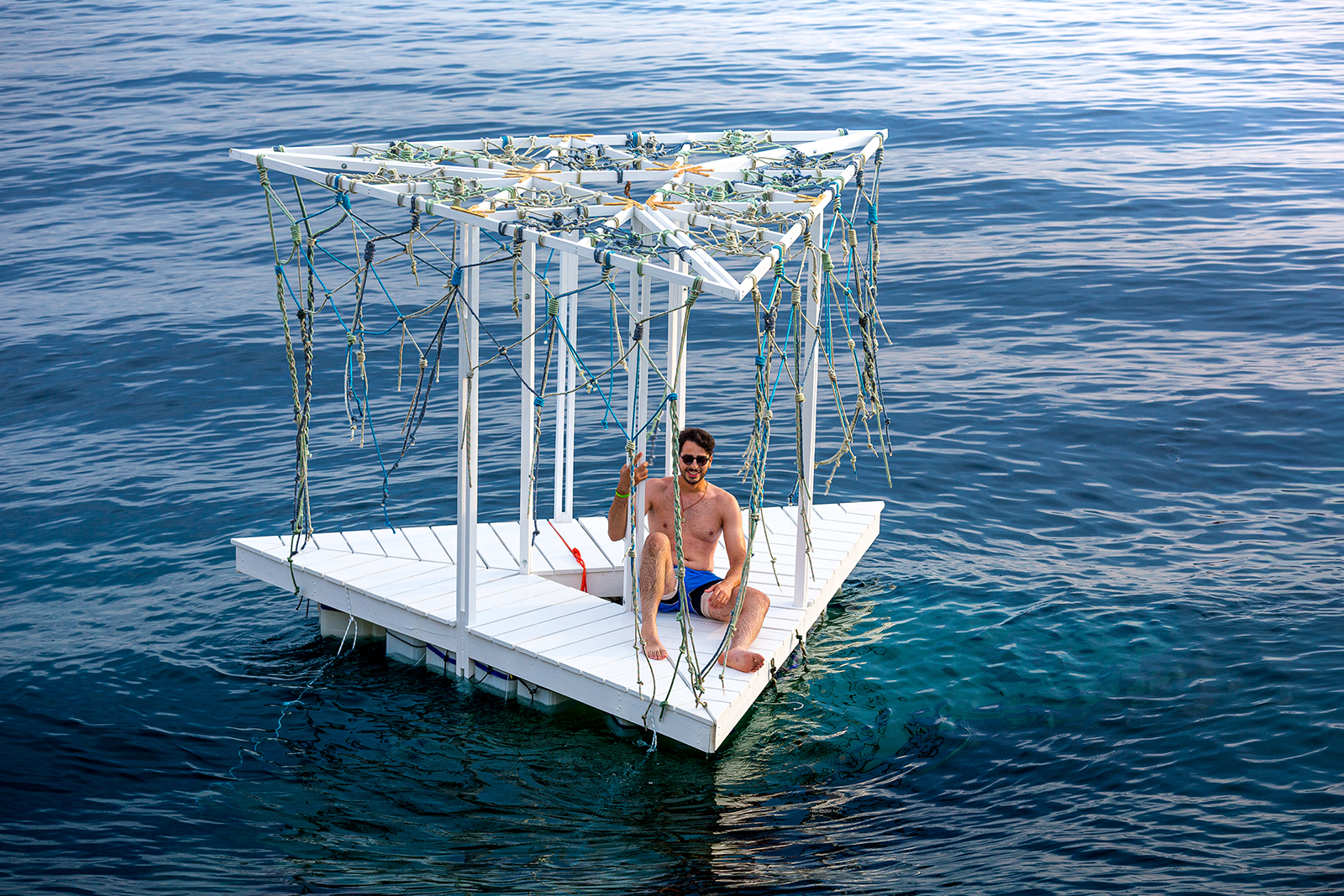
Projects / Workshops
This year’s Meds revolved around Rijeka, the ‘City of Textures’. All projects were typically hands-on, site-specific, and responded to the city and its context.
For instance, a project called ‘Urban Outf***ers’ led by Iva Mandurić, Vili Rakita, and Lea Mioković was an opportunity to design one’s outfit, a personal urban equipment, a public space survival kit to inspire and possibly shape one’s environment as soon as it’s taken off and left in public space. Something that was originally personal and individualistic suddenly became a part of public space to encourage interaction.
Anyone with a project in mind can become a tutor. A project called ‘Fialaigh’ (a veil, screen, or cover) was led by three TU Dublin graduates. All three, Christan Grange, Stuart Medcalf, and Shane Bannigan, studied architecture at Technological University Dublin and came to Rijeka to guide a project that was focusing on ‘themes of vacancy, occupation, value, and ephemerality, using spatial installation and film and the interface between them to interpret, capture, express, and let emerge narratives in our work’, as the tutors put it.
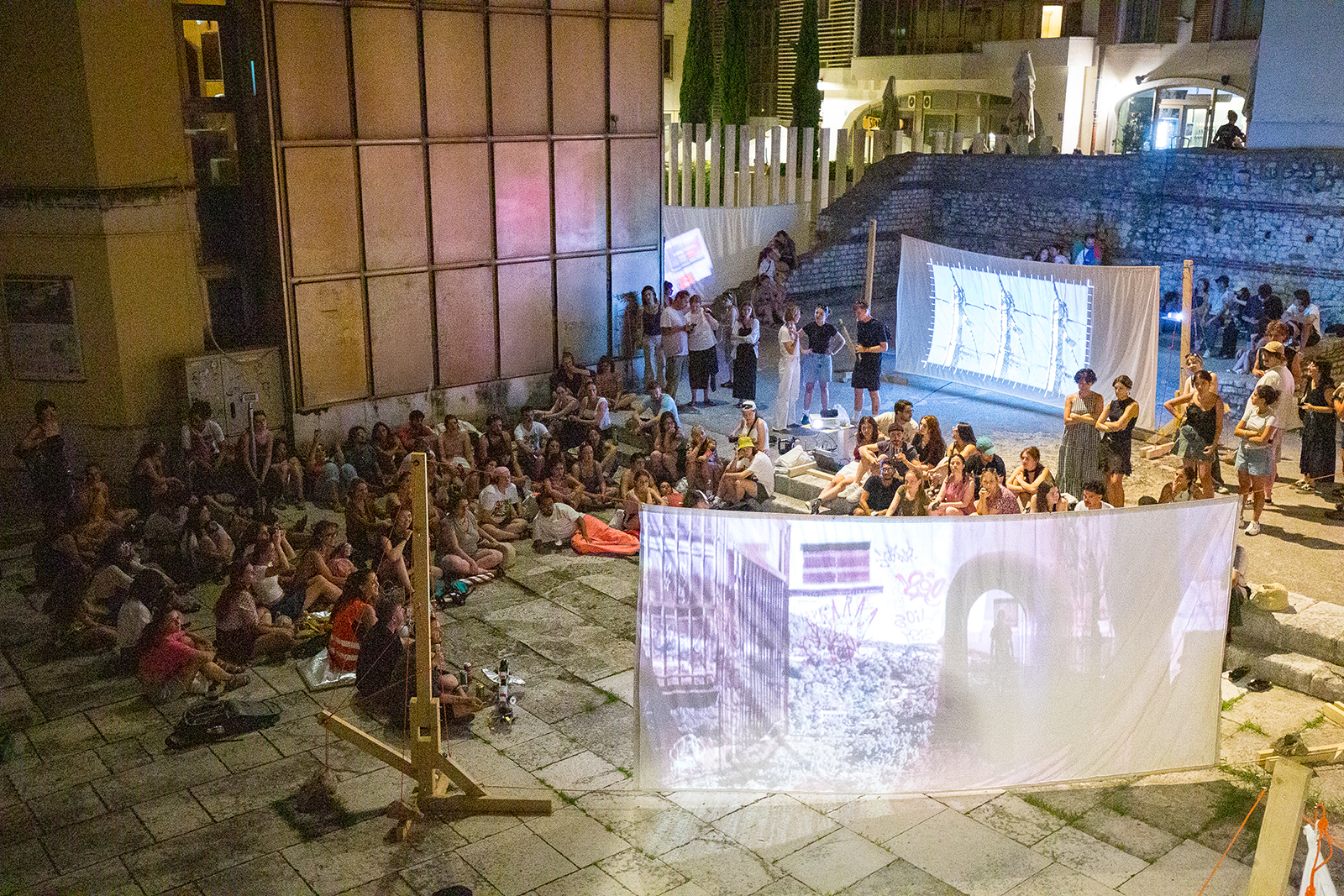
Had one wished for a building and construction-related project, one could have chosen from at least two options. The ‘Black Thought’ project proposed by designer Çisem Nur Yıldırım and the practising, Barcelona-based architect Alberto Collet involved building a sustainable wooden pavilion inspired by the Japanese technique Shou Sugi Ban. The other option offered rammed earth construction and tile production linked to themes of migration.
‘Plivatri’ and ‘Rječina’ were projects that designed public space interventions including a floating wooden platform for about eight people to hang out on, and pieces of public furniture made of scraps found on a trash pile for people to sit, share, and interact. Two of the tutors for ‘Plivatri’, Leda and Ahmad, met during MEDS workshop in Poland in 2021. Leda is a Cypriot designer based in the Netherlands, and Ahmad is a Lebanese architect and urban designer with experience across Europe and the Middle East. Leda later met Stephanie (a Romanian industrial designer) during their studies in Eindhoven. All three are passionate about alternative paths and collaboration across different disciplines and therefore teamed up as tutors.
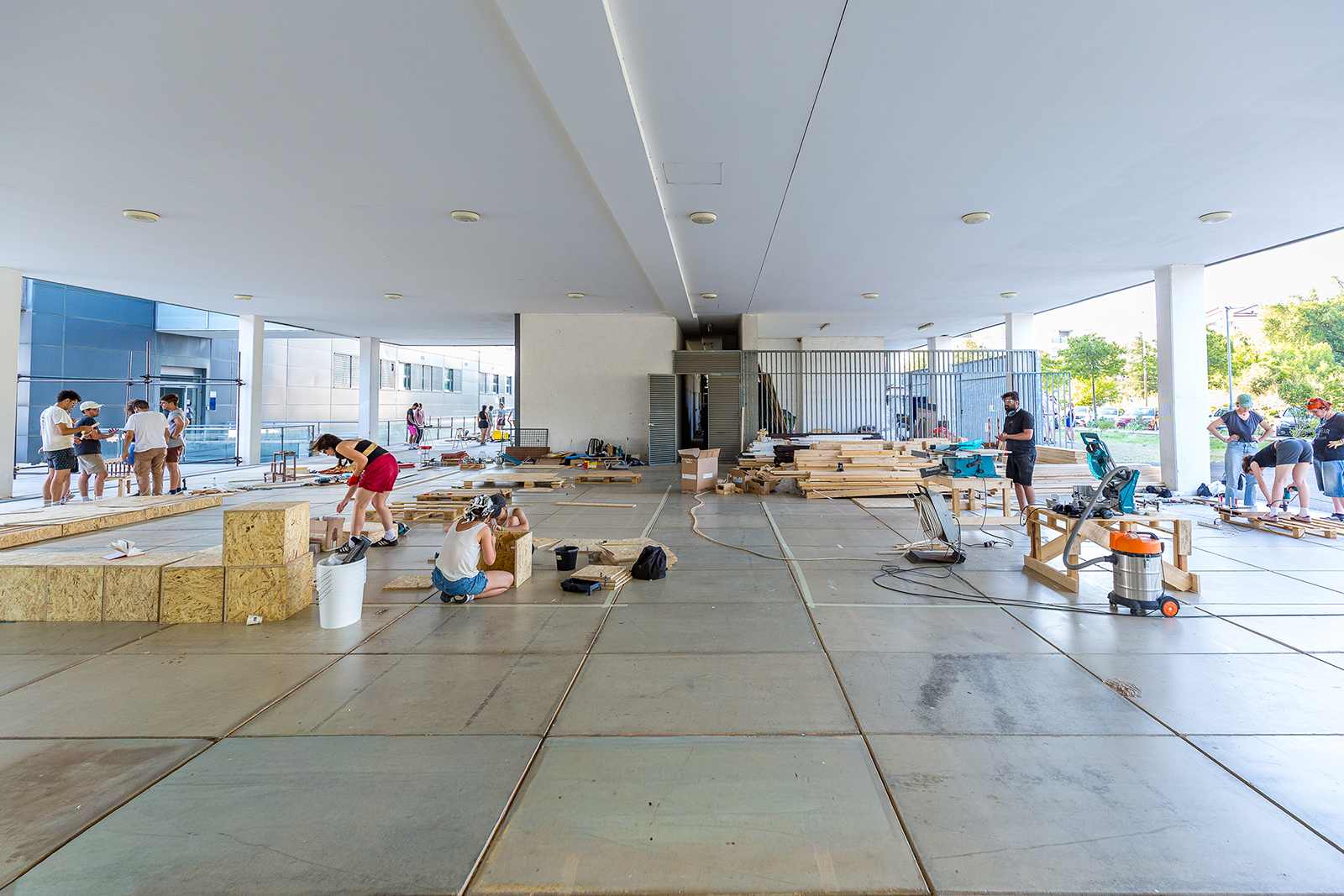
Last but not least, three Warsaw Polytechnic students were the tutors of the ‘Pop Of Colour’ project this year. Although Mateusz, one of the trio, has just finished a Bachelor’s in Architecture, he is a graffiti artist himself. Inspired by numerous murals all over Rijeka as well as its industrial heritage and sea-side views, the task was to co-design and paint a mural on one of the walls of the local school gym, make a few pieces of simple furniture, and design a few playground games. The playground and gym remained open during the day allowing local children to pop in and observe the work in progress.
The MEDS community firmly believes in involvement with local communities, and therefore organises guest lectures to foster the connection between international students and the whole community. From friendships, collaborations, and professional networks, connections built at MEDS last long after the event ends.
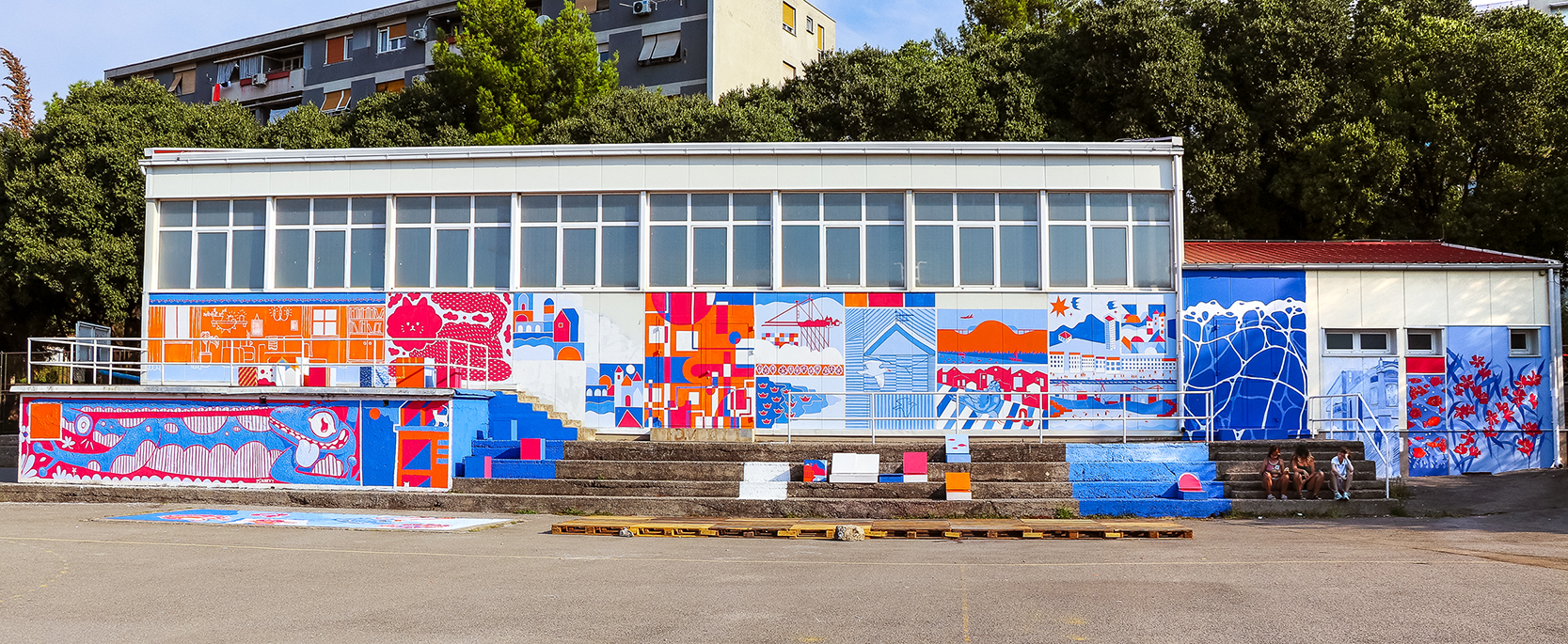
Living the MEDS experience
MEDS is a purely student organisation run by students, recent graduates, and young professionals (once participants themselves) who make the event happen year by year, advocating for this broader, collaborative approach. The whole event is organised by a different national team every year and is heavily reliant on various sponsors. Accommodation is usually simple; participants and tutors stayed in the local school in Rijeka. Surroundings are different every year, but enthusiasm, curiosity, and creative energy remain. As places at MEDS are limited, there is luckily a very similar organisation called EASA (European Architecture Students´ Assembly). Following the same principles, it is mostly attended by architecture students however. MEDS is an international multidisciplinary event for art, design, and architecture students as well as practising artists, designers, and architects to broaden their skills and develop creative ideas.
Above all, it is a wonderful opportunity to establish long-lasting connections between people, disciplines, and cultures in a cross-disciplinary, collaborative environment..
Interdisciplinary gatherings, and particularly those of an artistic nature, offer a great opportunity to learn in unpredictable ways by bringing together creatives from diverse fields. In this article, Kristýna Korčáková explores how the ‘MEDS’ programme provides this chance.
Read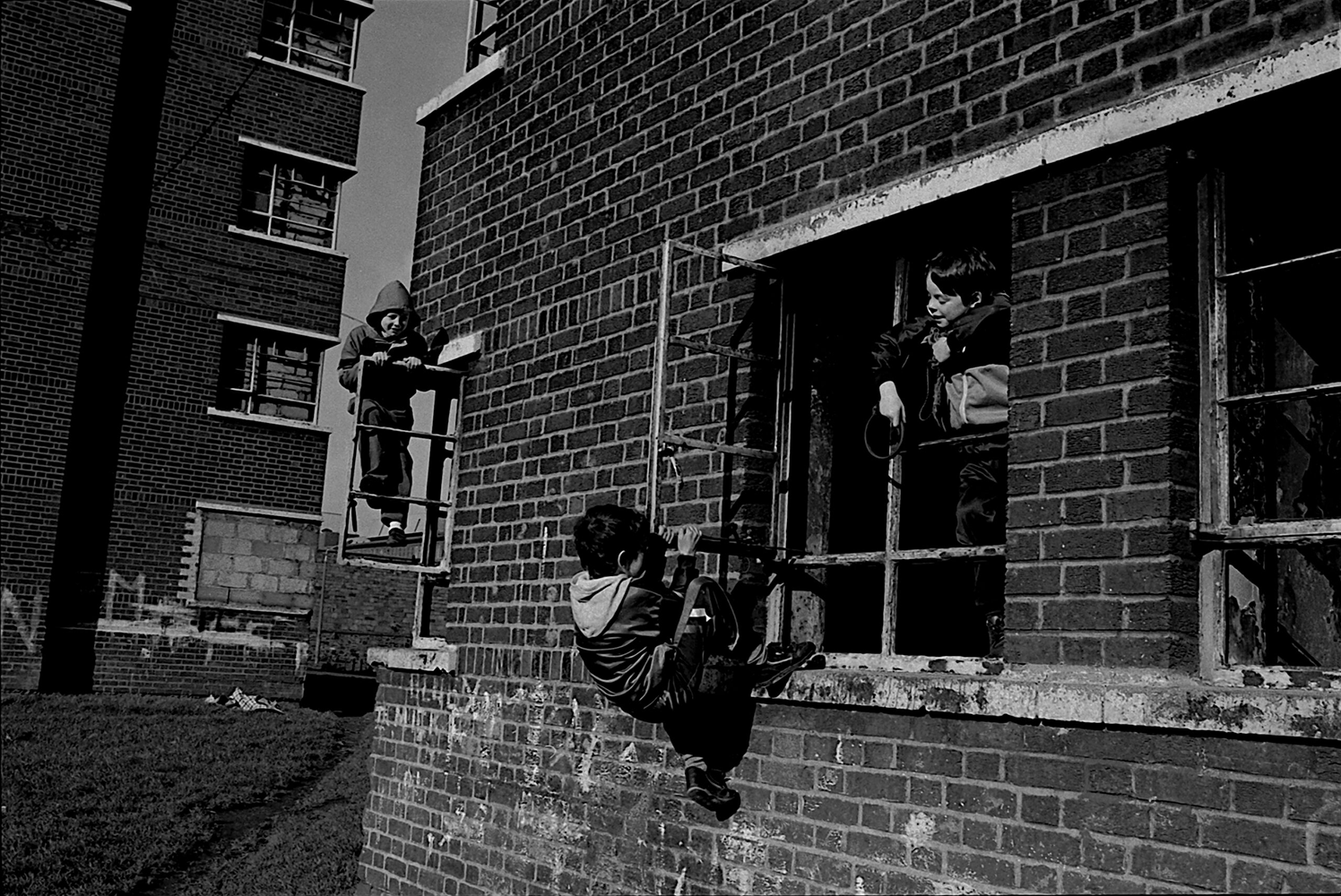
Yet in Ireland today, the built environment is too often defined by crisis; housing shortages, vulture funds, stalled planning, delayed public infrastructure, and sprawling suburbs with inadequate public transport. Across these challenges, one pattern is consistent - people’s needs have been systematically sidelined in favour of economics. This raises two critical questions; how did people become invisible in planning, and how has this eroded public trust?
To contextualise this argument through a recent controversy, the proposed redevelopment of Sheriff Street has been presented as a scheme designed to ‘regenerate the area’ and tackle underdevelopment. Yet, Rainbow Park, a green space in the heart of Sheriff Street, remains untouched despite long-standing calls from residents to transform it into a vibrant hub. According to Mark Fay, chairperson of the North Wall Community Association, residents were also blindsided by the announcement, revealing how little meaningful consultation took place.
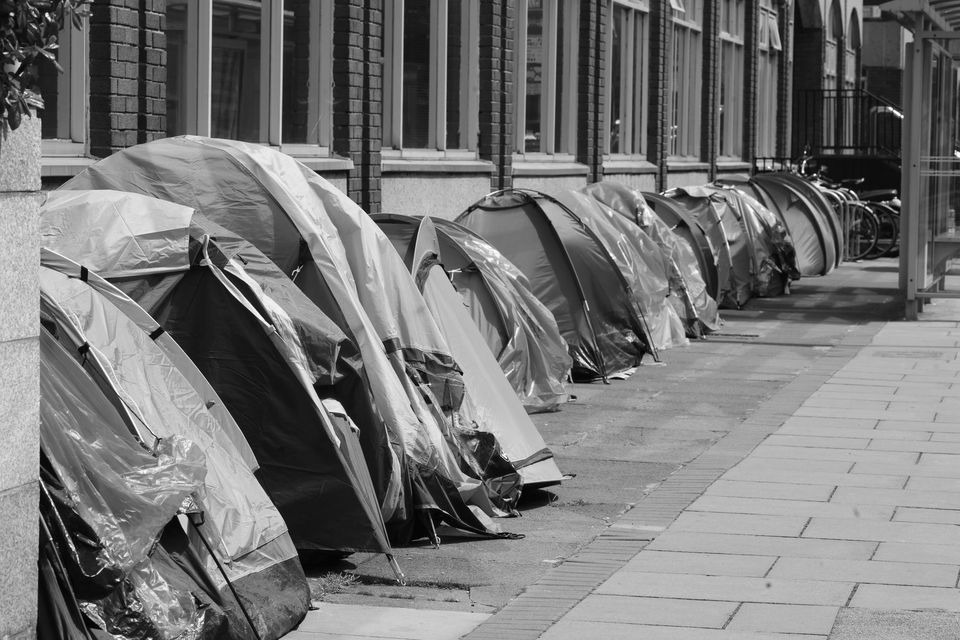
Urban theorist David Harvey has argued that regeneration often masks gentrification, where the well-being of current residents is sacrificed to increase property values. The office blocks and luxury apartments planned for Sheriff Street are designed for people largely ‘unindigenous’ to the neighbourhood, while those already living there risk cultural erasure. This is part of a larger pattern of gentrification dressed as renewal, sanitising inequality rather than addressing it.
So how might architectural practice move away from this cycle and begin to approach the built environment in a genuinely democratic way?
Public consultation has been offered as a solution, but in practice often amounts to little more than a box-ticking exercise. Public forums tend to come late in the design process, when decisions have already been made, leaving residents feeling duped. In order to truly facilitate democratic design, communities must be involved from the very beginning, when needs and opportunities are first identified. This must then be followed by genuine co-authorship, where residents have a real stake in shaping outcomes. And even this is not enough if architects and planners fail to develop empathy for the people behind the feedback.
This is where the act of ‘writing people back into design’ becomes important. ‘Fictional Narrative Writing’ is a methodology that I have developed which merges writing, storytelling, and narrative empathy, helping designers to integrate people and identities into their work. This involves creating characters and scenarios drawn from what is learned in the early stages of design development, and then designing through their eyes. Imagine Susan, aged forty-six, recovering from a hip replacement, needing to move comfortably through a building or public space. Or Steven, aged sixteen, with little money and nowhere safe to gather with friends. How might a street, square, or public building serve both of them? By imagining these lived experiences, architects are forced to consider how spaces perform for different people, ensuring that those consulted at the start are not only listened to, but remain present and visible in every stage of design.
By embedding empathy in practice, designers begin to understand diverse people’s needs, desires, and vulnerabilities, while the public sees themselves reflected in the design process. This mutual recognition rebuilds trust, transforming the built environment from a top-down imposition into a shared project of social life.
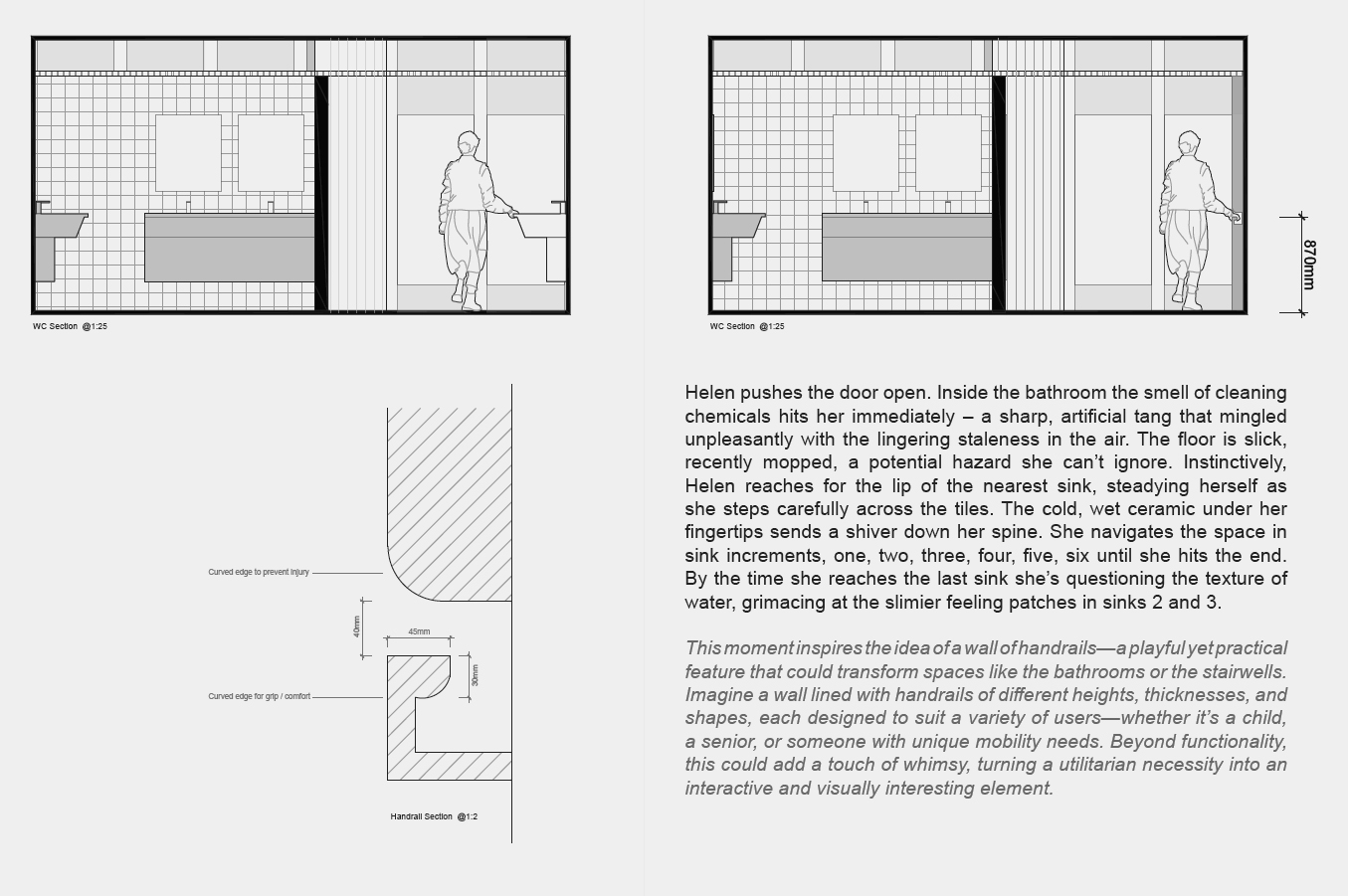
Above all, this methodology requires us to acknowledge that architecture is never neutral. Every design decision is a social, and therefore political, decision. This is not a plea for grand gestures, or expensive experiments. Often, small interventions can transform how a space is experienced. A family-friendly bathroom that gives independence to children. A sheltered bench that restores dignity to those waiting for the bus. Free, accessible indoor spaces that provide refuge to teenagers who have nowhere else to go. Inclusive facilities that allow people to exist without fear of scrutiny. These are not luxuries. They are the basics of a society that values its citizens.
Ireland is at a crossroads. The choices we make now will determine whether the built environment continues to alienate, or whether it begins to reconnect people, and foster a sense of community. We can persist with Tetris-block developments dictated by developer economics, or we can restore architecture’s social purpose. The shift will not come overnight, nor will it come through tokenistic frameworks. It requires a change of mindset, to see people not as passive recipients but as co-authors of the places they inhabit. It requires putting dignity and a sense of belonging on equal terms with cost and efficiency. It required introducing empathy as a design tool.
If we succeed, trust can be rebuilt. Our cities and towns can become places of pride rather than disillusionment, and the phrase ‘built environment’ can return to its true meaning: the collective spaces where people live - and live well.
It is time to write people, community, and democracy back into Ireland’s built environment.
The built environment is defined by Oxford Languages as ‘man-made structures, features, and facilities viewed collectively as an environment in which people live and work’. Looking beyond the sexism, naïve assumptions of inclusivity, and the capitalist emphasis on perpetual labour engrained in this definition, two words stand out: ‘people’ and ‘live’. I highlight these words as a reminder of the purpose of the built environment, and for whom it exists. The built environment should be a proactive space that empowers people to live a comfortable, functional, and democratic life.
ReadWebsite by Good as Gold.